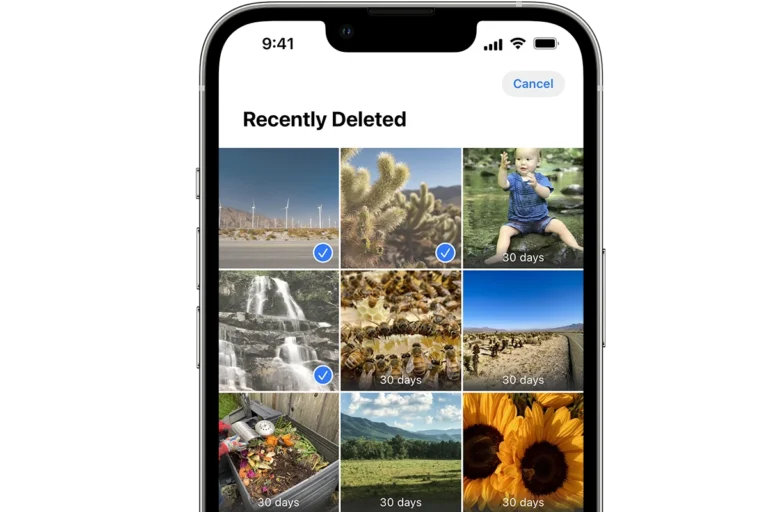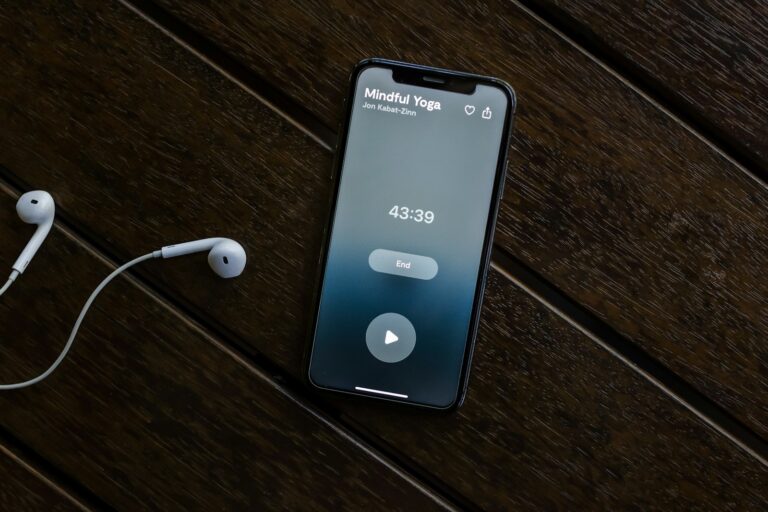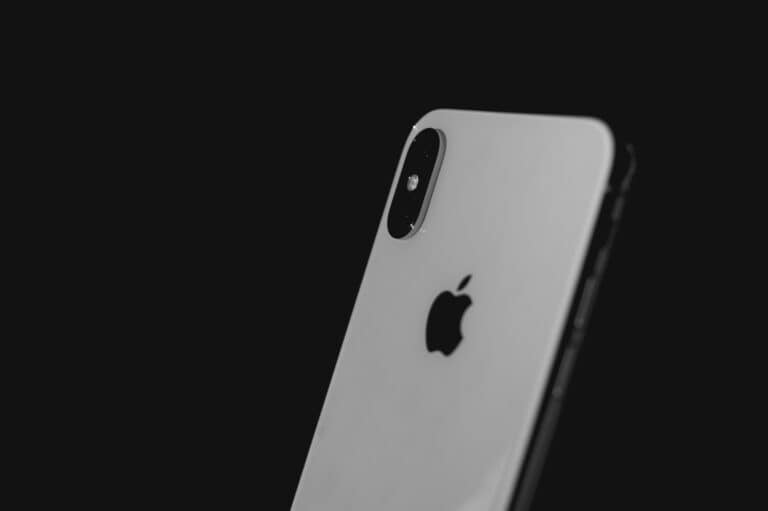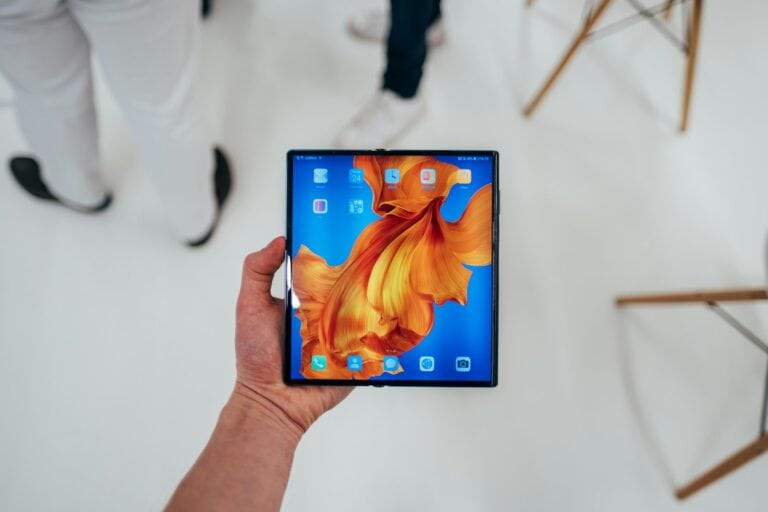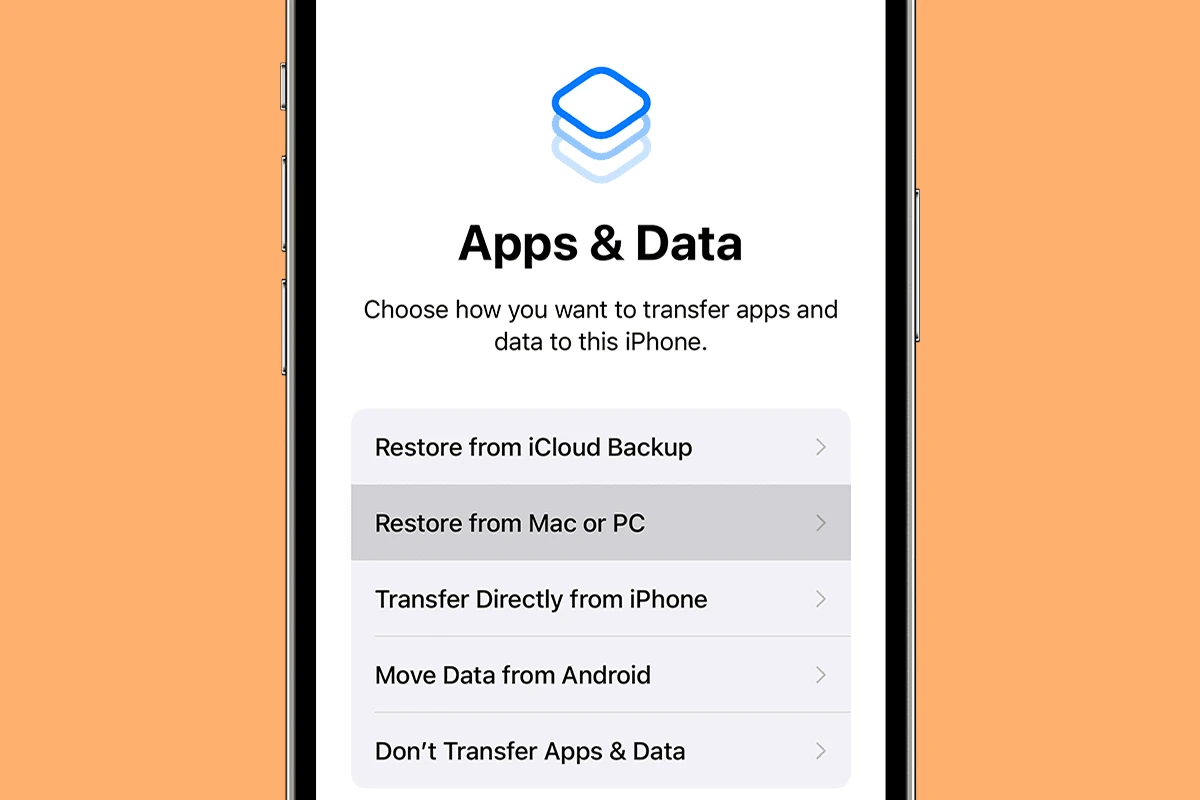
Losing important data on an iPhone can be stressful. iPhone data recovery software offers a solution to retrieve lost photos, messages, contacts, and more. These tools can recover data directly from iOS devices, iTunes backups, and iCloud backups, increasing the chances of successful file restoration.
Several iPhone data recovery options exist in 2024. Popular software includes Disk Drill, EaseUS MobiSaver, and FonePaw. These programs support the latest iOS 18 and provide multiple recovery modes. Users can choose between free and paid solutions, depending on their needs and budget.
When selecting iPhone data recovery software, consider factors like supported file types, ease of use, and compatibility with your device model. Some tools offer additional features such as data protection and preview options before recovery. This allows users to ensure they’re retrieving the exact files they need.
1. Check Recently Deleted Folder
- Photos & Videos: Open the Photos app → go to Albums → scroll to Recently Deleted. Items stay here for 30 days before being permanently erased.
- Notes: In the Notes app, check the Recently Deleted folder.
- Files app: Deleted files may also appear in the Recently Deleted folder for 30 days.
✅ Best for: Accidental deletions within the last month.
2. Restore from iCloud
- Go to Settings > [Your Name] > iCloud > iCloud Backup.
- If you have a recent backup, you can erase your iPhone and restore from that backup during setup.
⚠️ Note: This replaces all current data with the backup version, so make sure you won’t lose newer files.
3. Restore from iTunes/Finder Backup
- Connect your iPhone to a computer.
- Open Finder (macOS Catalina or later) or iTunes (Windows/macOS Mojave and earlier).
- Select your device → choose Restore Backup.
✅ Best for: Users who regularly back up to their computer.
4. Use Third-Party Data Recovery Tools
If you don’t have a backup, specialized recovery software may help retrieve files directly from your device. Popular options in 2025 include:
- iMobie PhoneRescue
- Dr.Fone – Data Recovery
- iMyFone D-Back
- AnyRecover
These tools can scan your iPhone for recoverable data, including deleted photos, contacts, and messages (source: Macworld).
5. Contact Apple Support
If the files are critical and none of the above work, reach out to Apple Support. They may have additional recovery options depending on your situation.
⚡ Pro Tips to Prevent Future Data Loss
- Enable automatic iCloud backups: Settings → [Your Name] → iCloud → iCloud Backup → Turn On.
- Use iCloud Drive or Google Drive for important documents.
- Regularly back up to a computer using Finder or iTunes.
✅ Bottom Line
- Recently Deleted folder → Quickest fix for recent deletions.
- iCloud/iTunes backup → Best if you had backups enabled.
- Recovery software → Last resort if no backups exist.
With these steps, you have a strong chance of recovering your lost iPhone files quickly and safely.
Key Takeaways
- iPhone data recovery software can retrieve lost files from devices and backups
- Multiple recovery options exist, ranging from free to paid solutions
- Key factors in choosing software include file support, ease of use, and device compatibility
Understanding iPhone Data Recovery
iPhone data recovery involves retrieving lost information from iOS devices. This process addresses various types of data loss and their underlying causes.
Types of Data Loss on iOS Devices
iPhone users may experience several forms of data loss. Photos, videos, contacts, messages, and app data are common casualties. System files and settings can also disappear. Some losses affect specific apps, while others impact the entire device.
Temporary inaccessibility differs from permanent deletion. Files in the “Recently Deleted” folder remain recoverable for 30 days. Beyond this period, recovery becomes more challenging.
Common Causes of iPhone Data Loss
Accidental deletion is a frequent culprit in data loss. Users might unintentionally erase files or empty the “Recently Deleted” folder. Software updates can sometimes lead to data disappearance, especially during iOS upgrades.
Hardware issues pose another risk. Screen damage or water exposure may render data inaccessible. Factory resets, often performed to fix software problems, erase all data.
Jailbreaking, while offering customization, increases data loss risks. Malware infections, though rare on iOS, can corrupt or delete files. Syncing errors with iCloud or iTunes may also result in missing information.
Methods of iPhone Data Recovery
iPhone users have several options to recover lost or deleted data. These methods include using iCloud backups, iTunes backups, and direct recovery from the device itself.
Recover from iCloud Backup
iCloud backup offers a convenient way to restore lost iPhone data. Users can access their backups through iCloud.com or directly on their device. To recover data:
- Go to Settings > General > Reset > Erase All Content and Settings
- Follow setup prompts and choose “Restore from iCloud Backup”
- Sign in to iCloud and select the most relevant backup
This method recovers contacts, messages, photos, and other data stored in the backup. It requires a stable internet connection and may take some time depending on backup size.
Recover from iTunes Backup
iTunes backups provide another option for data recovery. To use this method:
- Connect iPhone to computer with iTunes installed
- Open iTunes and select the device
- Click “Restore Backup” and choose the most relevant backup file
- Wait for the process to complete
This approach restores all data from the selected backup. It’s faster than iCloud but requires a computer with iTunes and a recent backup.
Direct Recovery from iOS Device
For situations without backups, direct recovery from the device is possible. Third-party software tools can scan the iPhone’s memory to find deleted files. Steps typically involve:
- Installing recovery software on a computer
- Connecting the iPhone via USB
- Scanning the device for recoverable data
- Selecting and saving desired files
This method can recover recently deleted items not yet overwritten. It works best for recovering specific files rather than full system restores.
Review of iPhone Data Recovery Software
iPhone data recovery software helps users retrieve lost or deleted files from their devices. These tools offer various recovery methods and support different types of data.
Analysis of Free iPhone Data Recovery Solutions
Free iPhone data recovery options provide basic functionality for retrieving lost data. Disk Drill offers a free version with limited recovery capabilities. It can preview recoverable files and restore up to 500 MB of data. EaseUS MobiSaver Free allows users to recover contacts, messages, and photos without cost.
FonePaw’s free trial lets users scan their devices and preview recoverable items. However, full recovery requires purchasing the paid version. Free solutions often have restrictions on the amount or types of data they can retrieve.
Comparison of Paid iPhone Recovery Apps
Paid iPhone recovery apps offer more comprehensive features and higher success rates. Dr.Fone stands out for its user-friendly interface and support for various iOS versions. It can recover over 18 types of data, including WhatsApp messages and app documents.
Stellar Data Recovery for iPhone boasts a high data recovery rate and selective recovery options. Users can choose specific file types to restore. iMyFone D-Back supports recovery from iTunes and iCloud backups, as well as directly from the device.
PhoneRescue offers a unique feature to fix iOS system issues alongside data recovery. Its price is competitive compared to other premium options. Leawo iOS Data Recovery provides a straightforward three-step recovery process and supports the latest iPhone models.
Advanced Data Recovery Techniques
iPhone data recovery techniques have evolved to address complex data loss scenarios. These methods can retrieve information from jailbroken devices and use specialized tools for challenging cases.
Recovering Data from Jailbroken iPhones
Jailbroken iPhones present unique opportunities for data recovery. The removal of iOS restrictions allows access to the file system. This access enables direct extraction of data from the device’s storage.
Recovery software can scan the entire file system. It can find deleted files that are not accessible through standard methods. Some tools can recover data from specific apps on jailbroken devices.
Caution is necessary when recovering data from jailbroken iPhones. The process can potentially compromise device security. Users should weigh the risks against the importance of the lost data.
Specialized Tools for Data Recovery Professionals
Professional data recovery tools offer advanced features for iPhone data retrieval. These tools can recover a wide range of file types, including photos, messages, and app data.
Some key features of professional recovery tools include:
- Deep scan capabilities
- Support for multiple iOS versions
- Ability to bypass lock screens
- Recovery from encrypted backups
These tools often use advanced algorithms to reconstruct fragmented files. They can also recover data from damaged or water-logged devices.
Professional tools may require technical expertise to use effectively. They often come with a higher price tag than consumer-grade solutions. However, they offer the best chance of recovering critical data in complex scenarios.
Best iPhone Data Recovery Apps (2025)
| Tool | Key Features | Supported Data Types | Ease of Use | Price Range (USD) | Best For |
|---|---|---|---|---|---|
| iMobie PhoneRescue | Deep iOS scanning, selective recovery, bypasses lock screen in some cases | Photos, messages, contacts, WhatsApp, more | ⭐⭐⭐⭐☆ | $49.99–$69.99 | All-around recovery |
| Dr.Fone – Data Recovery (Wondershare) | Recovers from iPhone, iTunes & iCloud backups; preview before restore | Photos, videos, messages, call logs, app data | ⭐⭐⭐⭐☆ | $59.95–$79.95 | Users needing flexible restore options |
| iMyFone D-Back | Smart recovery modes, iCloud/iTunes support, encrypted backup recovery | Messages, WhatsApp, WeChat, Kik, photos, notes | ⭐⭐⭐⭐☆ | $49.95–$69.95 | Messaging app recovery |
| AnyRecover (iOS) | High success rate, supports damaged/disabled devices, free trial available | Photos, videos, contacts, notes, Safari data | ⭐⭐⭐⭐☆ | $39.95–$59.95 | Budget-friendly recovery |
| Tenorshare UltData | Recover without backup, supports over 35 file types, preview before restore | Photos, messages, contacts, WhatsApp, Viber | ⭐⭐⭐⭐☆ | $45.95–$69.95 | Users who need wide file type support |
| EaseUS MobiSaver | Lightweight, free version available, recovers from iOS & iTunes/iCloud | Photos, videos, messages, contacts | ⭐⭐⭐☆ | Free–$59.95 | Quick, simple recoveries |
| FoneLab iPhone Data Recovery | Easy interface, selective recovery, encrypted backup support | Photos, messages, WhatsApp, Kik, Line, notes | ⭐⭐⭐⭐☆ | $49.95–$69.95 | Simplicity & encrypted backups |
🔑 Quick Recommendations
- Best Overall: iMobie PhoneRescue – reliable and versatile.
- Best for Messaging Apps: iMyFone D-Back.
- Best Budget Option: AnyRecover or EaseUS MobiSaver.
- Most File Types Supported: Tenorshare UltData.
Frequently Asked Questions
iPhone data recovery can be complex, but many common issues have solutions. Users often encounter challenges with water damage, free software options, and recovering data without backups.
How can I recover data from a water-damaged iPhone?
For water-damaged iPhones, quick action is crucial. Turn off the device immediately and do not attempt to charge it. Remove the SIM card and dry the phone with a soft cloth. Place the iPhone in a bag of uncooked rice or silica gel packets for 48-72 hours to absorb moisture.
After drying, professional repair services may be able to recover data. Success rates vary depending on the extent of water damage and how quickly action was taken.
What is the most effective free iPhone data recovery software?
Several free iPhone data recovery options exist, but their effectiveness can be limited. iTunes and iCloud offer built-in recovery features for backups. Third-party software like FonePaw and Disk Drill provide free trials with some recovery capabilities.
These free options often have restrictions on the amount or types of data they can recover. For comprehensive recovery, paid versions or professional services may be necessary.
Is it possible to restore permanently deleted data from an iPhone?
Recovering permanently deleted data from an iPhone is challenging but sometimes possible. If the data hasn’t been overwritten, specialized software may retrieve it. The chances of recovery decrease over time and with continued use of the device.
iCloud and iTunes backups can sometimes restore deleted data if the backup was made before deletion. For best results, stop using the device immediately after data loss and seek professional help.
Can data be retrieved from an iPhone with no prior backup?
Retrieving data from an iPhone without a backup is possible but limited. Some recovery software can scan the device’s storage directly. This method works best for recently deleted items that haven’t been overwritten.
Success rates vary based on factors like the age of the deleted data and how much the phone has been used since deletion. Professional recovery services may offer more advanced techniques for challenging cases.
How much is typically charged for professional iPhone data recovery services?
Professional iPhone data recovery services typically charge between $300 and $1,000. Costs vary based on the complexity of the recovery, device model, and turnaround time. Some services offer free evaluations before quoting a price.
Factors affecting cost include whether the device is water-damaged, if it has a broken screen, and the amount of data needing recovery. Expedited services often come at a premium.
What methods are available for recovering data from a non-functional or dead iPhone?
Recovering data from a non-functional iPhone requires specialized techniques. Professional services may use hardware-level recovery methods to bypass damaged components. This can involve removing the device’s memory chip and reading it directly.
Software-based recovery tools are generally ineffective for dead iPhones. In some cases, if the device can be temporarily powered on, data transfer to a new device might be possible.



